Oh So Many Shrimpgobies
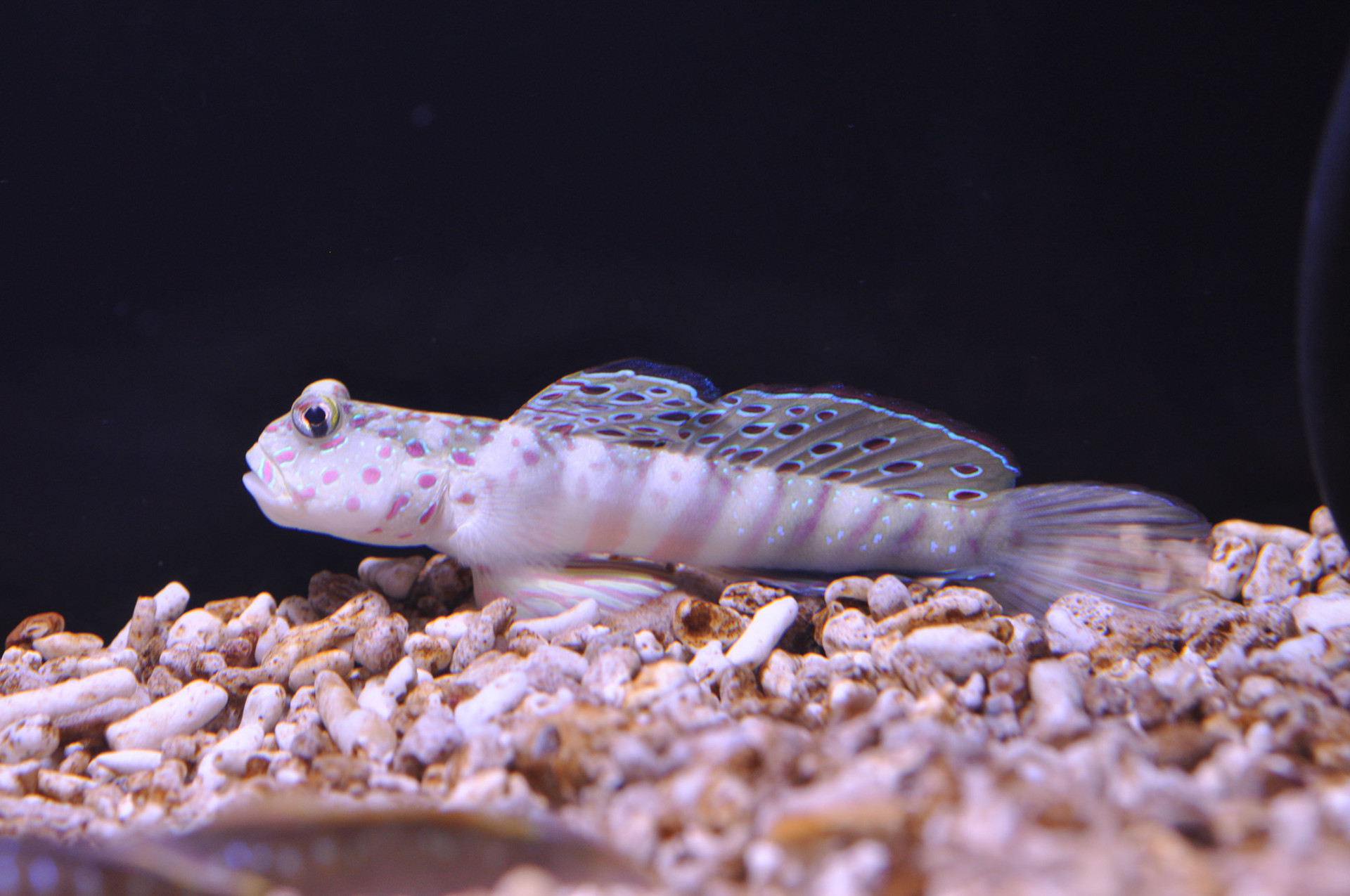
The relationship shared between gobies and pistol shrimps is one of the more fascinating symbioses in all the natural world. The goby acts as a sentinel, helping to warn its crustacean friend when danger is afoot, and, in return for this courageous service, the industrious shrimp allows the fish to live within the tunnels which it spends so much of its busy day excavating. The ease with which this can be recreated in a fish tank has made the goby and shrimp pair one of the more popular and entertaining choices for reef aquarists.
Step into any well-stocked fish store, and you can expect to find a number of common gobies along with a symbiotic pistol shrimp or two to choose from, but their diversity in the wild is far greater than most realize. At least 120 species of goby are known to cohabitate with alpheid shrimps (though note that most of these shrimps, especially the large decorative ones seen for sale, do NOT form such a relationship).
For some, the relationship is facultative, indicating a less specialized and perhaps more recently acquired symbiosis where there is little interdependence. These fishes will make use of a shrimp burrow when its handy, but they can get by without it, and the shrimp and goby tend to interact in a less intimate manner. In the Atlantic, examples include Notchtongue Goby (Bathygobius curacao) and the Dash Goby (Ctenogobius saepepallens), while the Indo-Pacific has the Striped Goby (Acentrogobius pflaumi), the Singapore Shrimpgoby (Cryptocentrus singapurensis), and the Filamented Dartfish (Ptereleotris hanae). None of these are encountered in the aquarium trade, save for the Dartfish.
For the rest of the species, the relationship is considered to be obligate. Without their shrimp, the goby would soon find itself out in the open, eventually falling prey to the many predators that stalk the reef. Interestingly, recent genetic study has shown that these species evolved twice within the Gobiidae, forming two distinct lineages whose closest relatives are not shrimp-associated. So lets take a moment to explore this biodiversity.
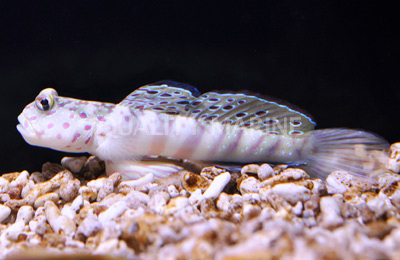
Cryptocentrus & Mahidolia
These two genera are close sister groups and together make up what is probably the largest of the shrimpgoby lineages. Cryptocentrus is widespread in the Indo-Pacific and has 35 species, including the Pink-spotted Shrimpgoby (C. leptocephalus) and the girthy Peacock Shrimpgoby (C. pavoninoides), which can grow roughly as large as a hot dog. The Yellow Watchman Goby (C. cinctus) is probably the most commonly seen species in this genus, but newer research shows it is actually a closer relation to the little-known Mahidolia shrimpgobies. These are morphologically similar groups, and the species in both are known for the unusual ability to come in both yellow and grey variations, the cause of which is entirely unknown. Presently, there is only a single species of Mahidolia recognized as valid, but there is strong evidence, both in the genetics and the color patterns of this fish, that multiple cryptic species exist. Its quite likely that the Yellow Watchman will eventually be renamed, but that awaits a formal taxonomic revision.
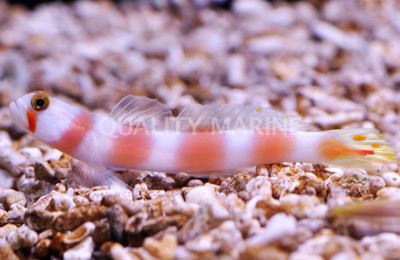
Amblyeleotris
The Amblyeleotris shrimpgobies are every bit as speciose as the previous genera, with 38 recognized species, along with a few more which remain scientifically undescribed. The differences between these and Crpytocentrus might not be readily apparent at first glance, but closer inspection reveals several important distinctions. For instance, the pelvic fins of Cryptocentrus are fused into a suction-like disc (typical for many gobies), while those of Amblyeleotris are longer and separated. There are also important differences in the number of dorsal fin rays, the type of scales (cylcoid vs ctenoid), and the arrangement of the sensory papillae on the head. More apparent to the casual observer, Amblyeleotris is on average far more colorful, with most species featuring a series of red stripes against a white background (compared to the muted earth tones in the majority of Cryptocentrus). Arguably the most sensational example is the Aurora Shrimpgoby (A. aurora), but many other standouts exist.

Stonogobiops & Myersina
The Stonogobiops shrimpgobies are dramatic fishes, featuring bold patterning and often flamboyant finnage. Only four species enter into the aquarium trade, the crown jewel of which is the Yasha Shrimpgoby (S. yasha). This magnificent red and white pipsqueak was known to aquarists years before it was formally described, but, despite its huge popularity, it remains poorly known from the wild, reported from just a handful of localities across the Coral Triangle. The closely related Myersina gobies are rarely, if ever, available. They occur in heavily silted lagoons in the West Pacific, typically far-removed from the habitats where most aquarium collection takes place. Many undescribed species are known to divers, and certain members of these two genera appear to blur the lines that separate them. These may, in fact, form a single diverse lineage, one which happens to be sister to Cryptocentrus. There is a characteristic behavioral difference between these two, as both Stonogobiops and Myersina hover over their burrows, while the larger, lazier Cryptocentrus and Mahidolia sit.

Ctenogobiops & Vanderhorstia
These two groups are closely related and differ primarily in the relative length of their caudal fin (elongated in Vanderhorstia). As weve seen, Ctenogobiops includes both facultative and obligate members, and this is the only genus to occur in both the Atlantic and Indo-Pacific. There are 9 species presently, most of which sport a pattern of small orange or brown spots for camouflage. The only example seen with any regularity is the Tangaroa Shrimpgoby (C. tangaroa), whose greatly elongated dorsal fin is unlike any others in its genus, looking more like it belongs in Stonogobiops. Vanderhorstia, on the other hand, is much larger, with 27 known species and another dozen or more needing to be named, and it occurs only in the Indo-Pacific. Many of these are patterned with colorful blue or yellow markings and would make for highly desirable aquarium fishes, but just a single species is collected, the Yellowlined Shrimpgoby (V. flavolineata).
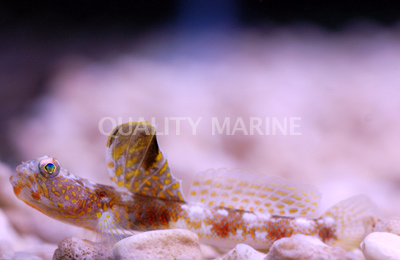
Tomiyamichthys & Flabelligobius
The tongue twisting name of this genus honors the Japanese goby expert Itiro Tomiyama, who described more than a dozen species during his career, including the familiar Orange-spotted Sleeper Goby (Valenciennea puellaris). Incidentally, that fish is NOT associated with pistol shrimps, but youll often see it sold in aquarium stores under the misleading name Diamond Watchman Goby. It watches nothing. Tomiyamichthys are definitely a group for the connoisseurs out there, as the 14 recognized species (along with several undescribed ones) are all quite drab in appearance. The most remarkable, though, is a still unnamed fish which appears sporadically in aquarium exports under the synonymized (i.e. invalid) name Flabelligobius. Its enormous dorsal fin is almost like that of certain male dragonets and is covered in a leopard patterning of dark spots.
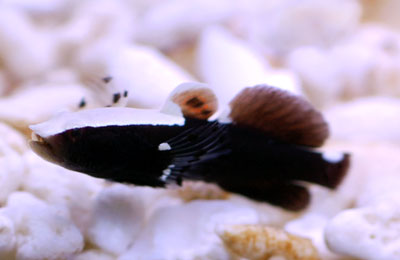
Lotilia
As reported by the ETYFish Project, this genus is named for Lotte Hass, wife of biologist, underwater cinematographer, and scuba-diving pioneer Hans Hass, who led a Red Sea expedition that resulted in the collection of the type specimens. Lotte was pregnant at the time and unable to join, but having this beautiful goby named in her honor must have been a nice consolation. Lotilia are quite small compared to most shrimpgobies, barely reaching an inch in length, and appear to be closely related to Cryptocentrus. Two species exist, L. graciliosa in the Indian Ocean, and the recently recognized L. klausewitzi in the Pacific. Unlike the preceding genera, which typically make use of either Randalls Pistol Shrimp (Alpheus randalli) or one of the Tiger Pistol Shrimps (A. cf bellulus), Lotilia favors the Redspotted Pistol Shrimp (Alpheus rubromaculatus).